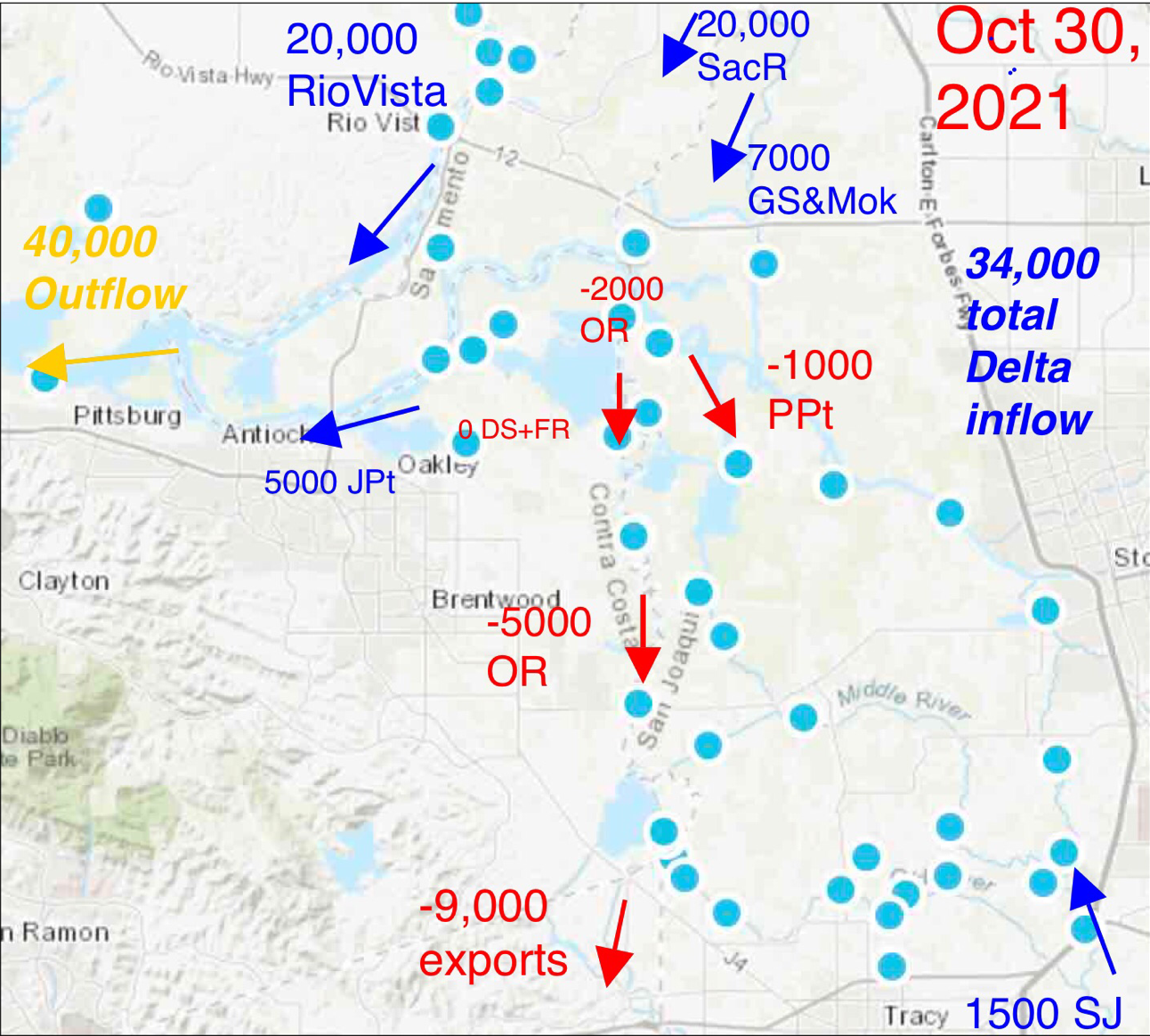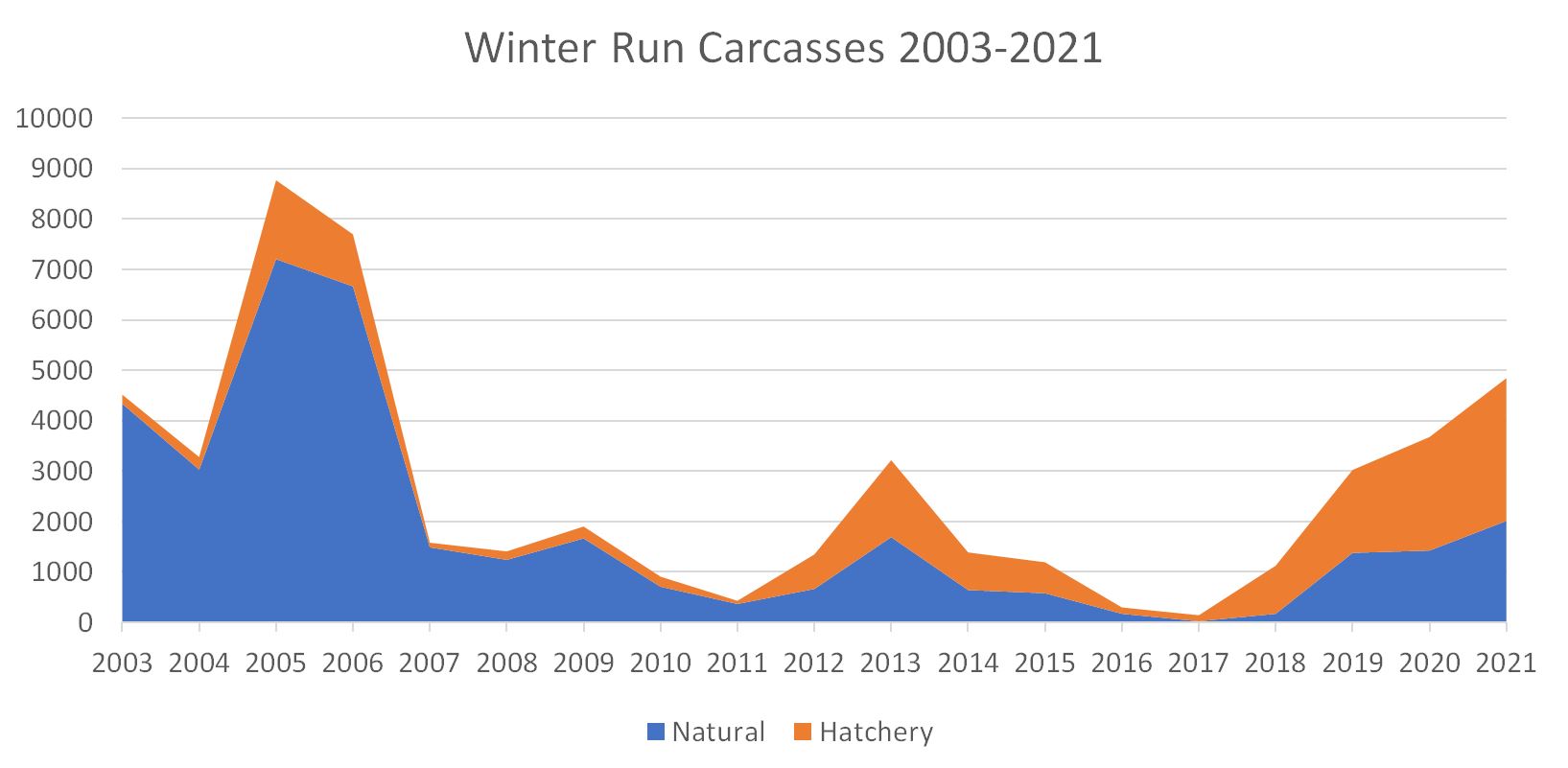A modest production of winter-run salmon fry was achieved in the Sacramento River near Redding this summer (Figure 1).1 With the recent storm that peaked on October 24, these young salmon are now moving down the river toward the Delta (Figure 2).
Upon entering the Delta, these young salmon face the grim fate of passing through the Delta Cross Channel (DCC)/and Georgiana Slough into the central and south Delta, where they are drawn to Delta pumps by sharply increased exports (Figure 3).
The diversion of Sacramento flows increases with the periodic opening of the Delta Cross Channel (Figure 4). On an outgoing tide, the diversion via the DCC and GS can be higher than 50% under these circumstances.
Once they enter the interior Delta, it is difficult for young salmon to navigate out to the Bay. Many are drawn with reverse net flows to the south Delta, especially in periods when the DCC is closed. The risks to salmon fry in Clifton Court Forebay (predation) and at fish facility screens are severe.
Closing the DCC during the flow pulse only increases flow through Georgiana Slough and traps any diverted salmon in the interior Delta. Keeping the DCC open minimizes the reverse flows in the interior Delta, but draws more salmon in. It is a tough call either way. So the best option for this first fall pulse of winter-run fry is to minimize exports. This type of protection has been considered many times in the past. It is currently required in the Incidental Take Permit (p. 80) for the operation of the State Water Project, but not until after December 1.

Figure 1. Passage of juvenile winter-run salmon past Red Bluff, September-October 2021.

Figure 2. Catch of winter-run fry in lower Sacramento River near Wilkins Slough (RM 120) in fall 2021.

Figure 3. Graphic depiction of Delta net flow (cfs) conditions in late October 2021.

Figure 4. Hourly flows through Delta Cross Channel in October, 2021.






























